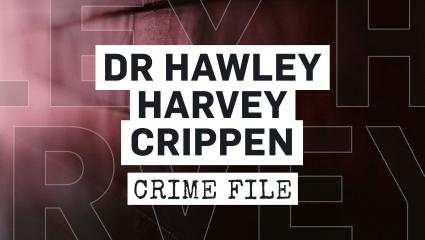The Crimes
On 17 January 1910, Crippen ordered five grains of the poison, hydro-bromide of Hyoscine, from a New Oxford Street chemist called Lewis & Burrows, who supplied medications for his dentistry practice. Hyoscine was a drug known for its sedative properties and, at the time, was used in extremely small dosages by doctors to subdue mental patients. It had no obvious dental applications.The last night that Belle was seen alive was 31 January 1910, when the Crippens had guests for dinner.Since Crippen denied the murder of Belle, the exact chain of events were never conclusively proven, but medical experts summoned at his trial surmised that Crippen’s intention was to fatally sedate Belle, and then summon his friend Dr. Burroughs, who had been previously primed with an illness story, when he ‘found’ her dead in their bed. Perhaps Crippen over-medicated whatever medium he used to administer the drug, but Belle became hyperactive, rather than sedated, and created a tremendous amount of noise. Crippen, in desperation, shot her with his revolver, and neighbours heard the sound, although they didn’t recognise it as a gun shot at the time.With Crippen’s neat execution plan now seriously awry, he decided that Belle’s body would have to be secreted in the cellar of the house. As the cellar was very small, and Belle a large woman, he dissected her corpse in the bath, removing her long bones and ribs, which he took down to the kitchen and burned in the open hearth there. He may also have used acid to dissolve her internal organs in the bath. He lifted the stone floor of the cellar, and buried her filleted torso there, before disposing of her head, and other remaining organs, in a weighted sack, in a canal near Hilldrop Crescent.The next day he attended to patients at his dental practice as though nothing was amiss. He told Ethel that Belle had left him, and made her a gift of some of her jewellery, pawning the rest of her jewellery later that day. He also asked Ethel to deliver a note to the Ladies’ Guild, in which ‘Belle’ resigned her post as treasurer, advising her friends that she had to travel to America to tend to a sick relative. The members of the Ladies’ Guild were suspicious from the outset, Belle having never mentioned any ailing relative to them. However, it wasn’t until 20 February, when Crippen attended a Guild Ball accompanied by Ethel, who was wearing Belle’s jewellery, that they voiced their concerns openly.Inundated almost daily by enquiries about Belle from various Guild matrons, Crippen tried to staunch the gossip by informing them that Belle had fallen seriously ill in California. He then sent a telegram to the Martinettis, the couple with whom he and Belle had shared their final meal, on 24 March 1910, saying that Belle had died. Crippen also disappeared for a short break to France with Ethel, which seemed unduly hasty, given the recent death of his wife.The Ladies’ Guild pressed Crippen for details of Belle’s funeral on his return; he claimed she was being cremated in the United States. As a Catholic, Belle would not have countenanced cremation so, armed with all the evidence they had amassed over the previous two months, they approached Chief Inspector Walter Dew at Scotland Yard, laying out their suspicions. He claimed that there was too little evidence with which to proceed.Undaunted, they continued their investigations, discovering that no boat had sailed to the United States on the day Belle was supposed to have left, and no one named Crippen had died in California on the day claimed in the telegram. Dew was forced to respond to the allegation, and he visited Crippen at home on 8th July 1910, questioning him about the death of his wife. Crippen admitted candidly that he had invented the story of her death: Belle, he claimed, had left him for another man, and he was merely trying to avoid the scandal and humiliation. Dew decided that he believed the story, and took his leave.


